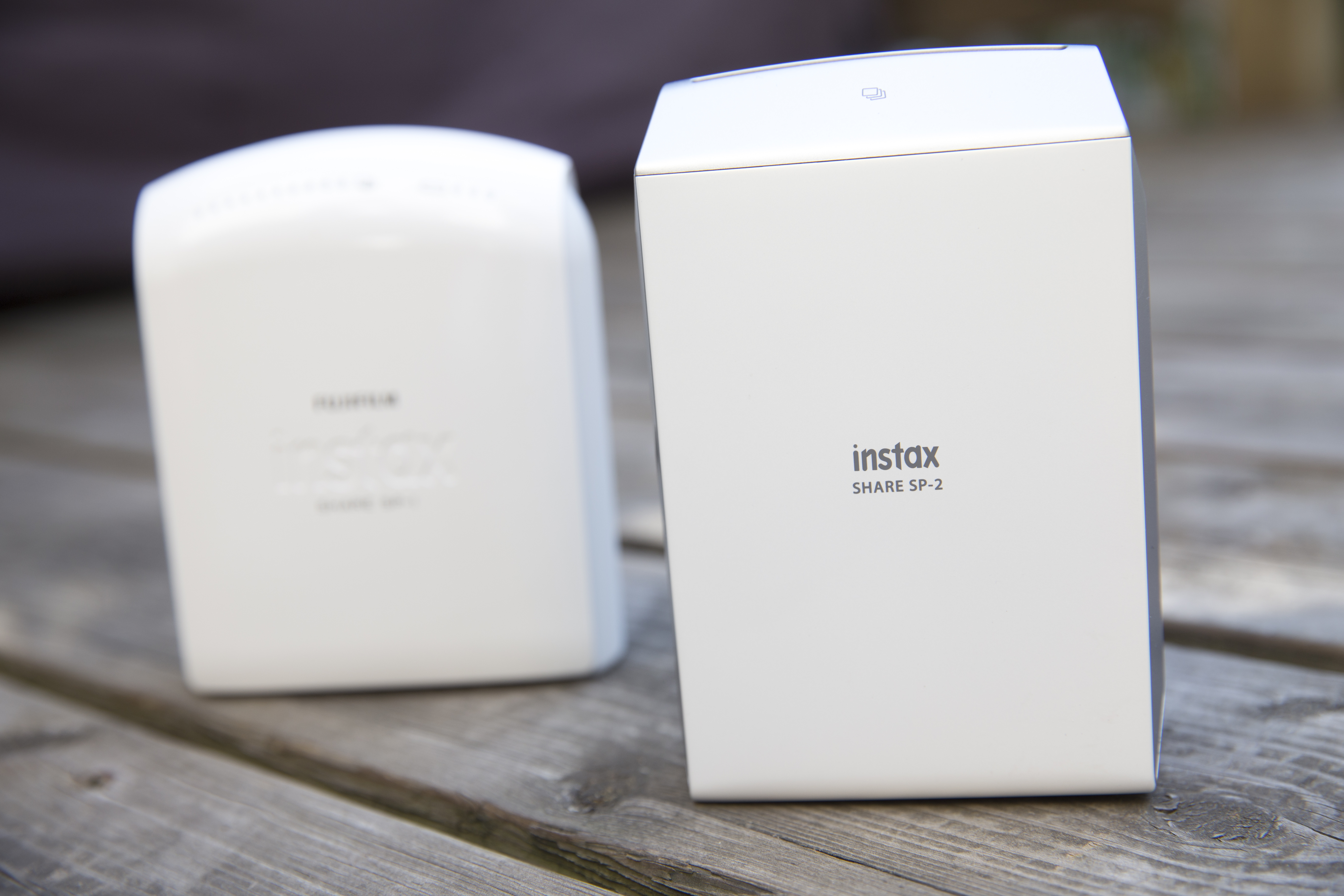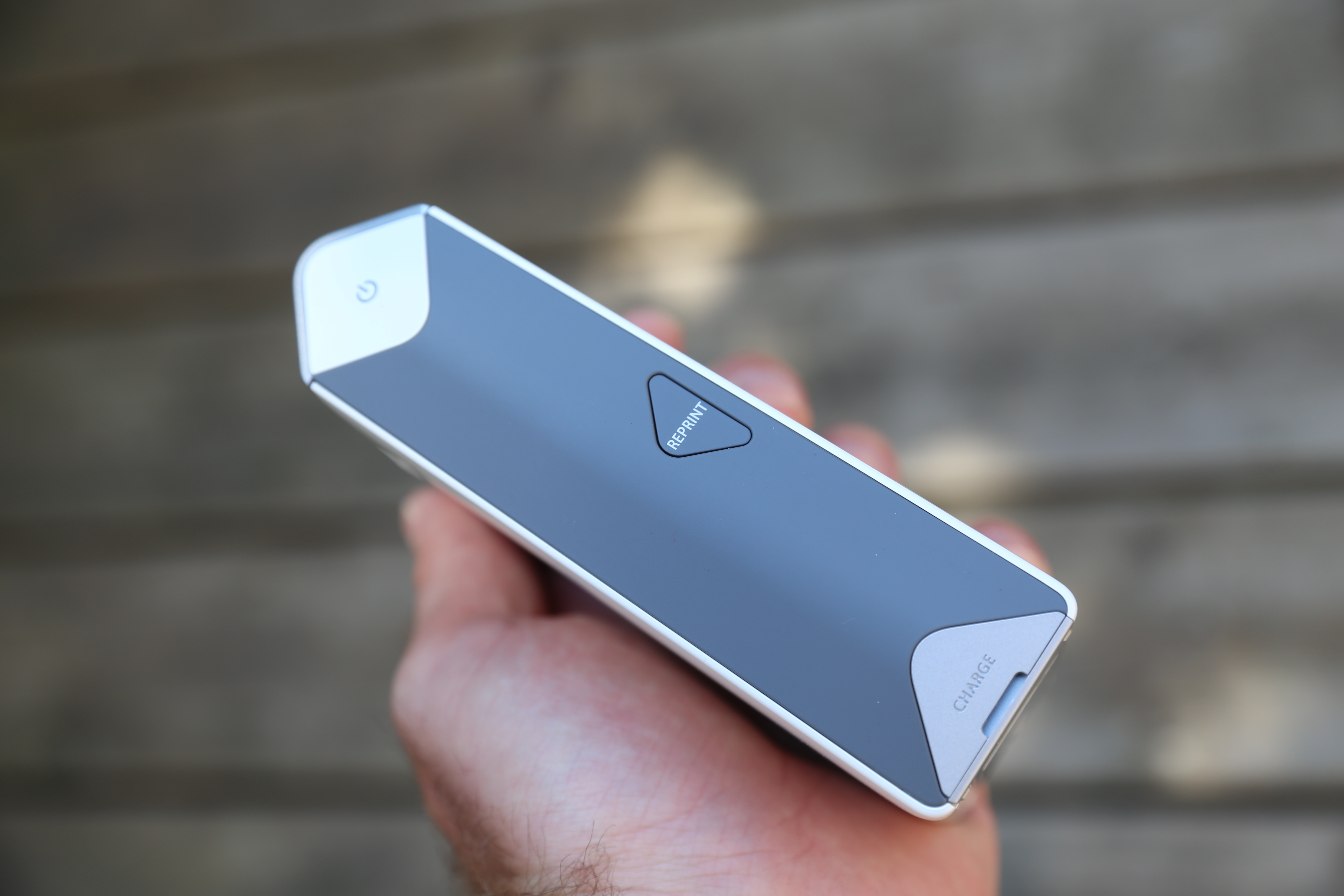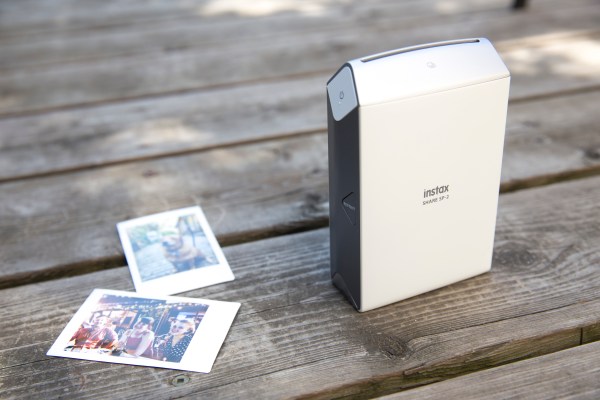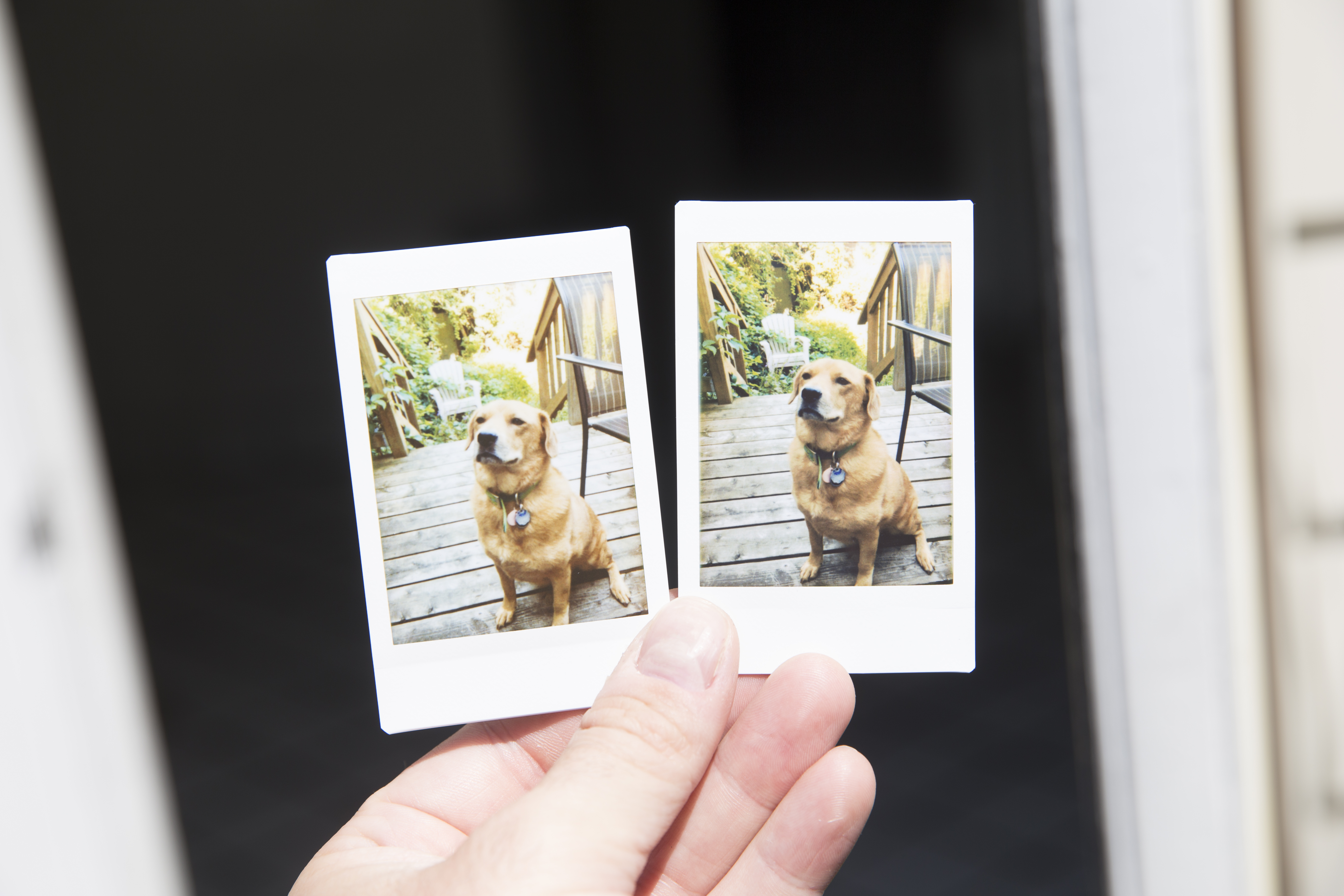A physical picture is worth a thousand digital ones.
Or at least, in terms of my appreciation of the memories they represent, that’s what it feels like. That’s why I was excited enough about the Fujifilm Share Instax SP-2 to go out and grab one as soon as it showed up in stock at my local camera shop.The SP-2 is a Wi-Fi picture printer, a device that harkens back to the glory days of Polaroid by giving you a pocket-sized, physical version of your favorite snaps from your smartphone, whenever and wherever you want one. It’s the sequel to the Share SP-1, Fujifilm’s original portable instant printer, and it competes both with that device while it remains in stock, and with official Polaroid competition via the Polaroid ZIP.
For my money, Instax’s latest offering is the best of the bunch, because of how well the SP-2 captures the best parts of instant photography’s retro appeal, while making improvements that help highlight just how far tech has come.
Angling up
The SP-2 is very similar to its predecessor in physical design: They’re both basically thick little rectangular boxes, kind of like if you took an iPhone 4, put it in a heavy duty waterproof case and stacked two of those combos on top of one another. It’s not really a pocket device, but it is still broadly portable, and easy to throw in a bag, backpack or purse.

Fuijilm also trimmed down the SP-2 when compared to the SP-1, and generally improved the hardware design. In place of gentle curves, there’s a slightly more modern angled aesthetic to the front of the printer where the pictures are ejected. It’s like when the rolling car body designs of the sixties and 70s started giving way to the aggressively geometric looks of the eighties.
Last note on design differences is that the body sides are now rubberized, which makes it easier to grip the printer. The old version was overly smooth, despite some texturing on the sides, which combined with its larger size made me occasionally nervous I’d drop it.
As with the original, the outside case boasts a simple LED indicator showing you how many prints are left in your Instax Mini film pack (they carry 10 each) and giving you an idea how much battery you have left. A big button on the side of the front is your power control, activating the printer’s dedicated Wi-Fi network, which you connect to with your smartphone to print (up to eight people can connect at once for party fun). And there’s a smaller button mid-body that lets you print the last photo you ran off from local memory again without even connecting your device.
Battery bettering
Also new to the SP-2 is the battery. The SP-1 used two CR-2 batteries, which are specialized units used mostly for cameras (meaning you’re unlikely to have too many on hand). That also meant it couldn’t charge easily, so if you ran out and didn’t have any spares, you were out of luck.
The SP-2 uses a Fuji NP-45 battery, which is a lithium-ion battery used for a number of its compact cameras. Switching to this battery also allows for USB charging, using the same micro USB cable you probably use for a host of other gadgets. It’s also swappable, meaning you can stock up on the units (they’re about $12.50 per for first-party, or less for third-party versions) to keep fully charged ones on hand.
Both the SP-1 and the SP-2 were rated for around 100 prints per charge, but the SP-2’s system is far more convenient, especially considering this is designed for use on the go.
Improving images – but not too much
Picture quality gets a bump on the SP-2 vs. the first generation, with 800×600 pixel resolution at 320 dpi. The SP-1 could only manage 640×480 at 254 dpi. The actual difference you’ll experience when looking at prints isn’t as dramatic as the numbers might make it seem, however: Only when I printed the same photo on each printer and looked at them side-by-side did I notice that the SP-2 produces crisper results, especially with fine detail.
The SP-2 also handles color better, delivering more accurate colors where the SP-1 tended to blow out (over-expose) your images vs. what you’d expect from looking at the picture on your smartphone.
And while the SP-2 doesn’t blow the SP-1 away in terms of print quality, it does offer improvements that are clear when you see the pictures from each version side-by-side – while at the same time maintaining a bit of slight fuzziness that contributes to the retro appeal of instant printing overall.
Bottom Line
Fuifilm’s Instax SP-2 is the best instant printer out there, with printing time improved to about 10 seconds per photo vs. 15 for the older model, quieter printing, and a host of new app-based features including the ability to include real-time weather data, or info from Instagram like number of likes and captions directly onto the image. For $199, it’s what I would buy if I was in the market for a brand new mobile instant printer, no question.
Fujifilm’s system for its Instax film continues to shine, too: The cartridges load conveniently and easily into the back of the SP-2 without much room for user error, and you can use the same packs you already have on hand if you’re an existing SP-1 or Instax camera owner.
 That said, if you’re picking one up looking for a major upgrade from the SP-1, you might want to save your cash. It is indeed an improvement, as I describe above, but the truth is that prints from both now adorn my fridge, and in a few weeks’ time, I probably couldn’t tell you which individual image came from which based solely on output quality.
That said, if you’re picking one up looking for a major upgrade from the SP-1, you might want to save your cash. It is indeed an improvement, as I describe above, but the truth is that prints from both now adorn my fridge, and in a few weeks’ time, I probably couldn’t tell you which individual image came from which based solely on output quality.
I’m still keeping the SP-2 I purchased, however, because both it and its predecessor more than make up for their cost in fun value for money.


